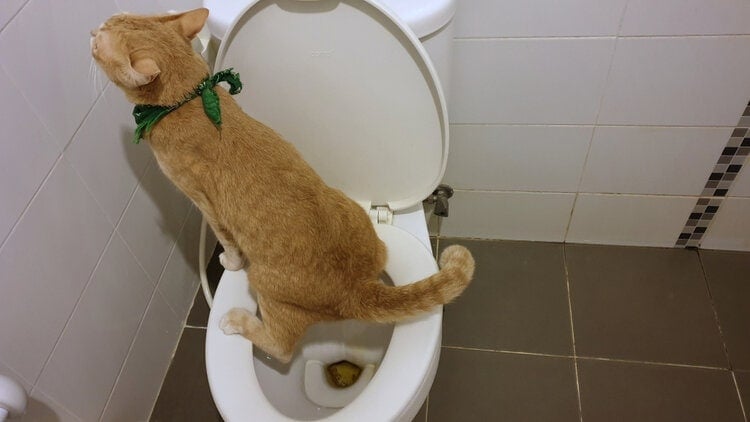Potential Issues of Flushing Cat Poop Down Your Toilet - Safeguard Your Pipes
Potential Issues of Flushing Cat Poop Down Your Toilet - Safeguard Your Pipes
Blog Article
The author is making several great pointers on How to Dispose of Cat Poop and Litter Without Plastic Bags overall in this great article down the page.

Intro
As feline proprietors, it's necessary to bear in mind just how we dispose of our feline pals' waste. While it may appear convenient to purge pet cat poop down the toilet, this technique can have destructive effects for both the atmosphere and human wellness.
Ecological Impact
Purging cat poop introduces hazardous microorganisms and parasites into the water system, posturing a significant risk to aquatic environments. These impurities can adversely affect aquatic life and compromise water high quality.
Health and wellness Risks
Along with environmental concerns, purging cat waste can likewise present health and wellness threats to humans. Feline feces may contain Toxoplasma gondii, a bloodsucker that can create toxoplasmosis-- a potentially severe ailment, specifically for expectant women and people with damaged immune systems.
Alternatives to Flushing
The good news is, there are much safer and much more accountable means to get rid of cat poop. Consider the adhering to options:
1. Scoop and Dispose in Trash
One of the most common technique of disposing of cat poop is to scoop it into a naturally degradable bag and throw it in the garbage. Be sure to use a devoted litter scoop and dispose of the waste immediately.
2. Usage Biodegradable Litter
Choose naturally degradable pet cat clutter made from materials such as corn or wheat. These litters are environmentally friendly and can be securely gotten rid of in the trash.
3. Hide in the Yard
If you have a yard, consider hiding pet cat waste in a marked location away from vegetable gardens and water sources. Make certain to dig deep adequate to prevent contamination of groundwater.
4. Mount a Pet Waste Disposal System
Purchase a pet waste disposal system specifically developed for cat waste. These systems use enzymes to break down the waste, reducing smell and ecological effect.
Conclusion
Responsible pet dog possession prolongs beyond providing food and shelter-- it also entails appropriate waste management. By avoiding purging feline poop down the toilet and going with alternate disposal methods, we can decrease our ecological impact and safeguard human health.
Why Can’t I Flush Cat Poop?
It Spreads a Parasite
Cats are frequently infected with a parasite called toxoplasma gondii. The parasite causes an infection called toxoplasmosis. It is usually harmless to cats. The parasite only uses cat poop as a host for its eggs. Otherwise, the cat’s immune system usually keeps the infection at low enough levels to maintain its own health. But it does not stop the develop of eggs. These eggs are tiny and surprisingly tough. They may survive for a year before they begin to grow. But that’s the problem.
Our wastewater system is not designed to deal with toxoplasmosis eggs. Instead, most eggs will flush from your toilet into sewers and wastewater management plants. After the sewage is treated for many other harmful things in it, it is typically released into local rivers, lakes, or oceans. Here, the toxoplasmosis eggs can find new hosts, including starfish, crabs, otters, and many other wildlife. For many, this is a significant risk to their health. Toxoplasmosis can also end up infecting water sources that are important for agriculture, which means our deer, pigs, and sheep can get infected too.
Is There Risk to Humans?
There can be a risk to human life from flushing cat poop down the toilet. If you do so, the parasites from your cat’s poop can end up in shellfish, game animals, or livestock. If this meat is then served raw or undercooked, the people who eat it can get sick.
In fact, according to the CDC, 40 million people in the United States are infected with toxoplasma gondii. They get it from exposure to infected seafood, or from some kind of cat poop contamination, like drinking from a stream that is contaminated or touching anything that has come into contact with cat poop. That includes just cleaning a cat litter box.
Most people who get infected with these parasites will not develop any symptoms. However, for pregnant women or for those with compromised immune systems, the parasite can cause severe health problems.
How to Handle Cat Poop
The best way to handle cat poop is actually to clean the box more often. The eggs that the parasite sheds will not become active until one to five days after the cat poops. That means that if you clean daily, you’re much less likely to come into direct contact with infectious eggs.
That said, always dispose of cat poop in the garbage and not down the toilet. Wash your hands before and after you clean the litter box, and bring the bag of poop right outside to your garbage bins.
https://trenchlesssolutionsusa.com/why-cant-i-flush-cat-poop/

Do you really like reading up on Don’t flush cat feces down the toilet? Post a review further down. We would be glad to find out your opinion about this page. Hoping that you visit us again in the near future. Do you know about someone else who is in the market for the niche? Feel free to share it. We cherish reading our article about Can You Flush Cat Poop Down The Toilet?.
Pricing Report this page